How to Tell if you have Turf Disease
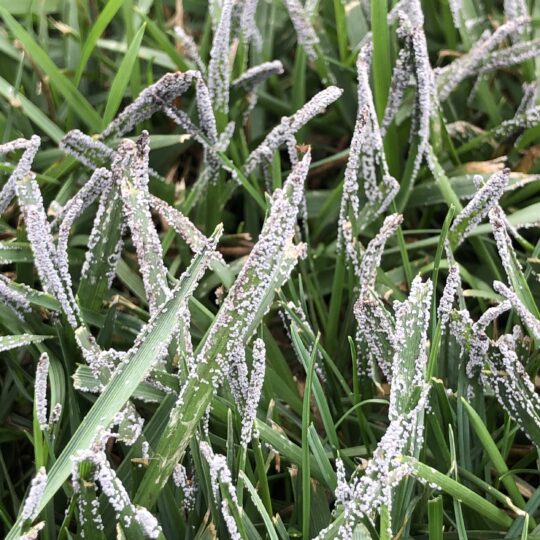
The seasons can be tough on a lawn. There are always insects, different types of weeds and stresses to worry about. One of the worst being turf diseases.
Turf disease will occur when you have a susceptible host, with a pathogen present and environmental conditions are favorable for disease (called the disease triangle).
Diagnosis can be difficult and with quite a few different types of diseases that affect our area it can sometimes be near impossible to pinpoint. Specific diseases will grow on specific hosts so knowing what species of grass that is currently growing in your lawn is important to identify the potential disease.
Most lawn programs do not include preventative fungicide treatments as part of the core program. Preventative fungicides work well, but only prevent for approximately 3-4 weeks, warranting 5-6 applications during the growing season.
Here are some key identifiers to look for if you think your lawn might be struggling due to disease.
Discolored “spots” or lesions on leaves: one key to identifying specific turf diseases is noticing discolored spots on the leaf blade.
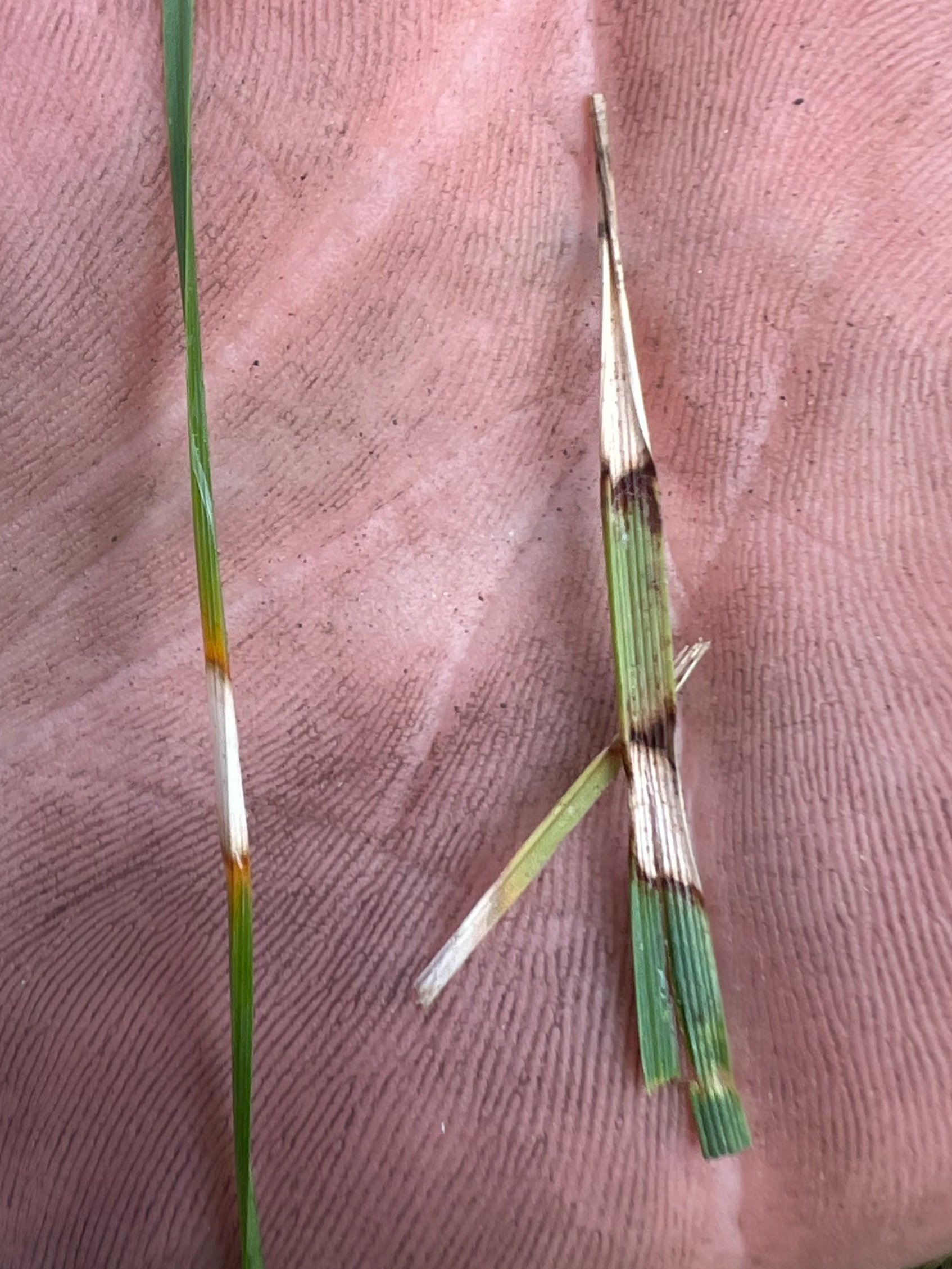
Fungal Structures: They vary in shape, color, and appearance, ranging from a mushroom type of structure to a spider web looking structure. The best time to see these structures is when moisture is present, normally early in the morning with a significant amount of dew present.
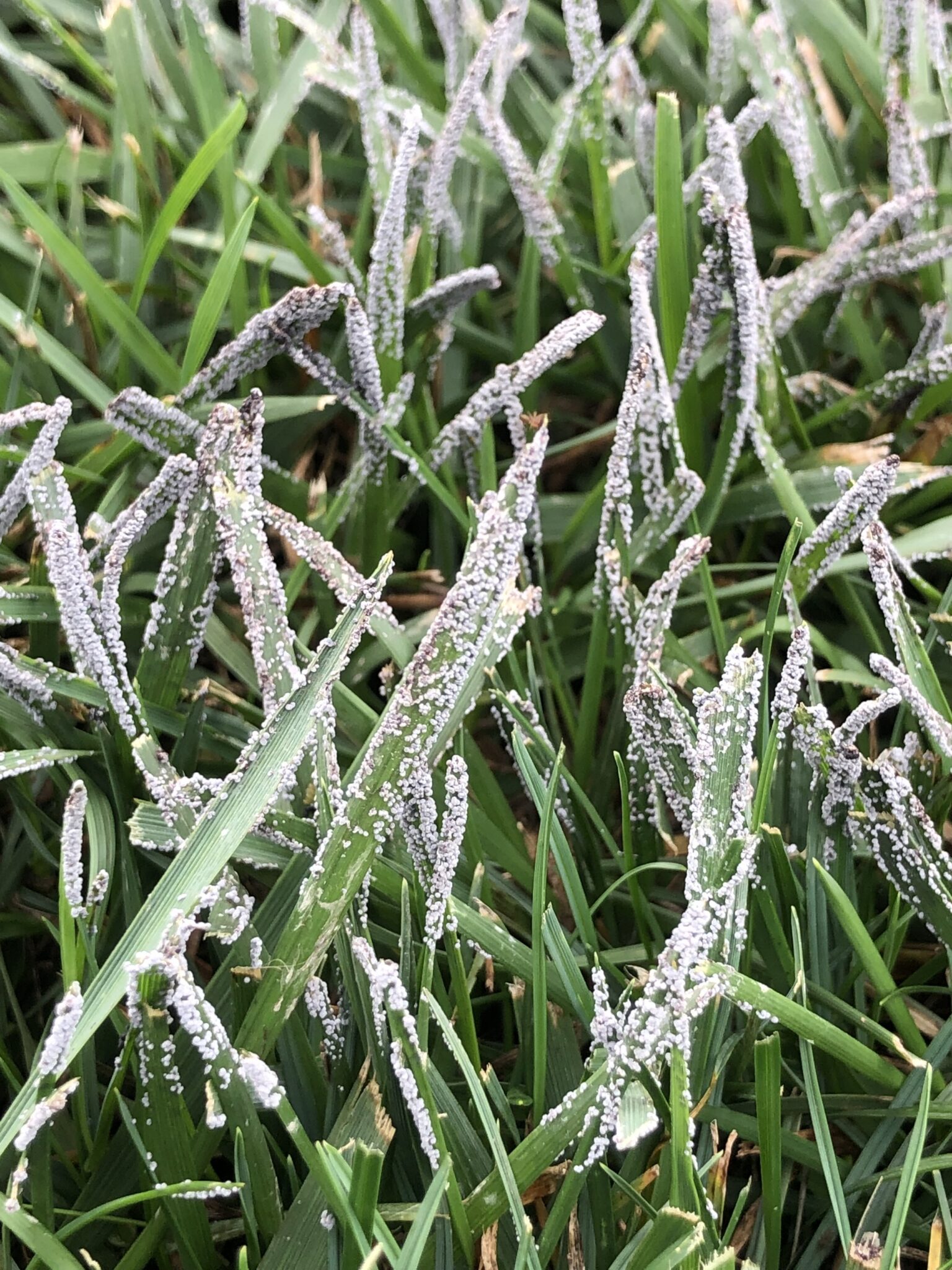
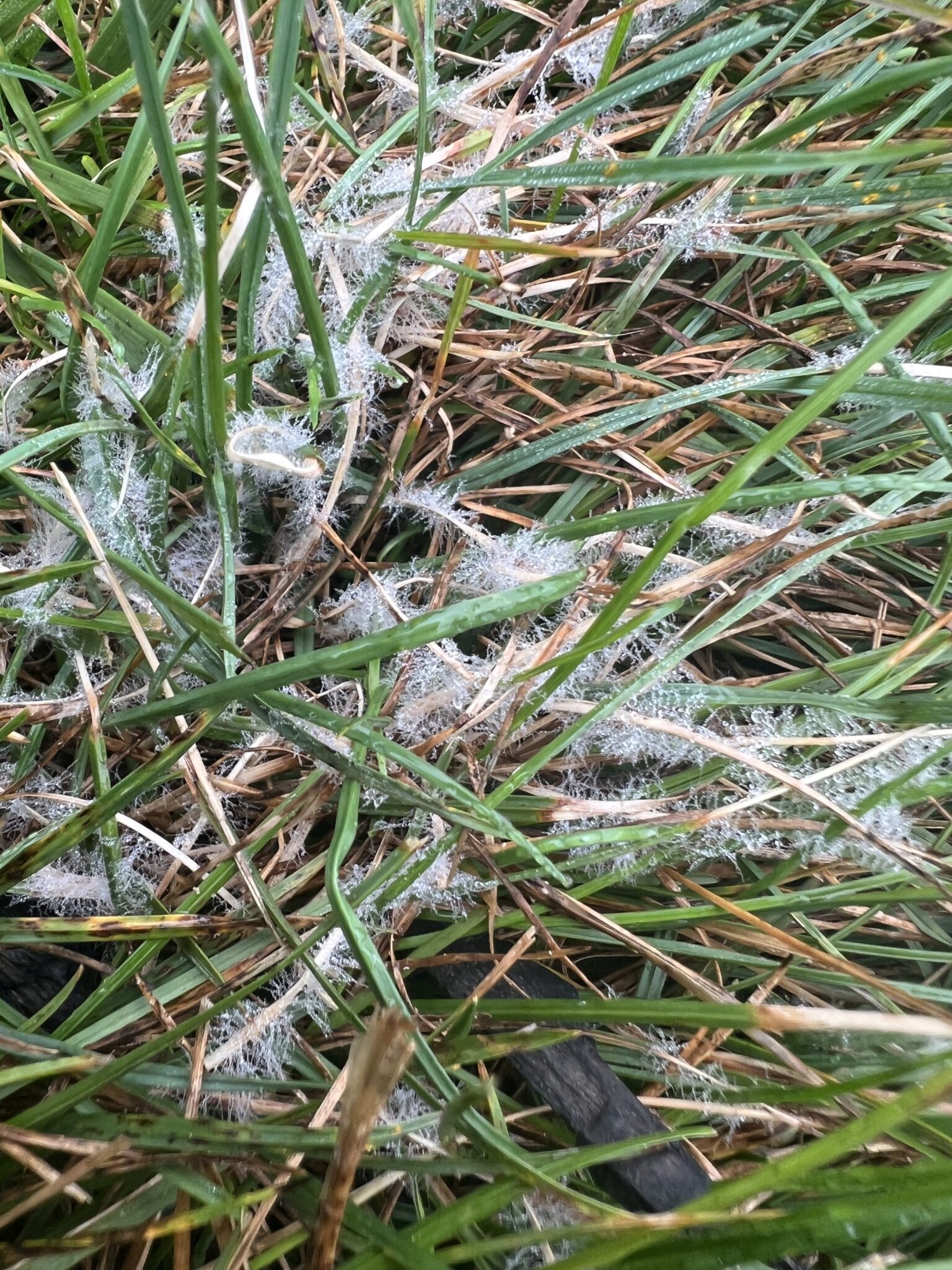
Areas that look wilted or collapsed. Certain diseases will cause grass plants to wilt quickly. This, along with fungal structures, can leave the grass appearing matted or collapsed in some areas. Some diseases will cause infected areas to have a different hue to them when observed during a morning dew or appear to look greasy.
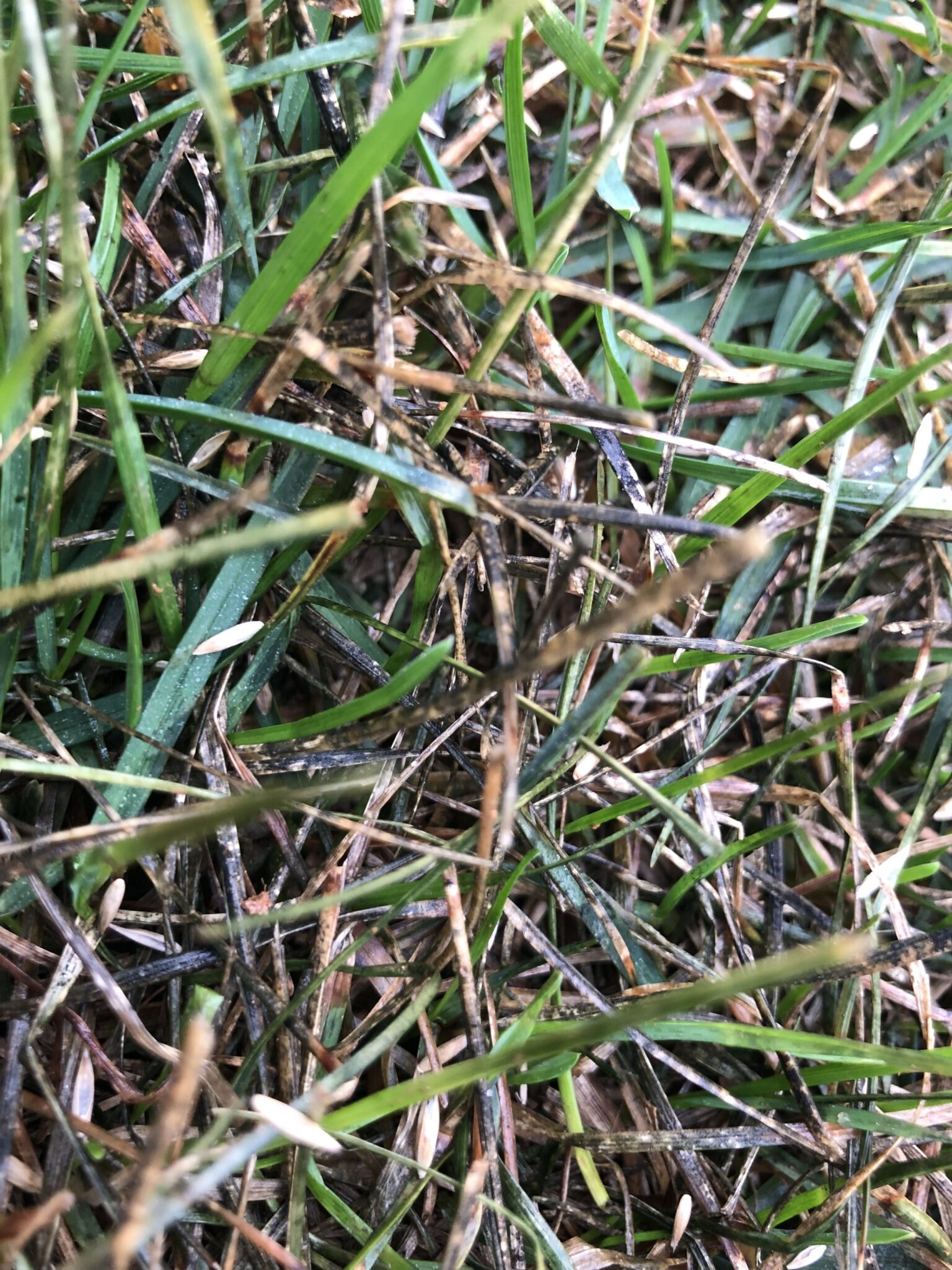
Residue on Shoes and Mower: Depending what fungi is present in the lawn, you may notice strange powdery substances on shoes or on your mower. These will vary in color as well as at the time of the year it is present.
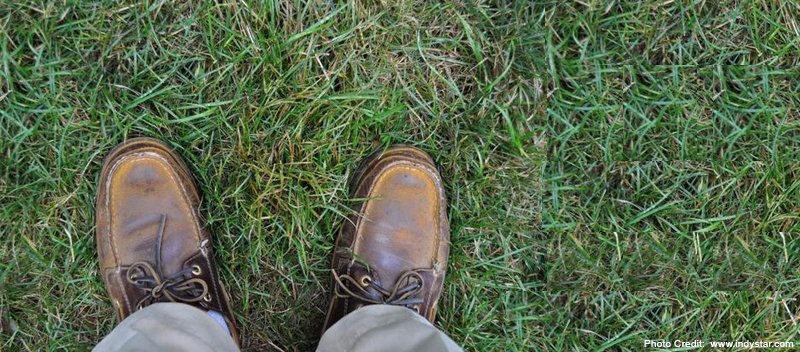
Does the affected area travel in the same direction as water would run off your lawn: Certain disease can travel and spread with the same path as runoff water on your lawn. Spores can also be picked up and spread by mower tires in wet conditions, so this can also be a helpful type on what might be causing the damage.

If you see any of these on your lawn, please call or email us a few pictures and we can help diagnose the issue and provide a disease control package to help your lawn fight off the problems.